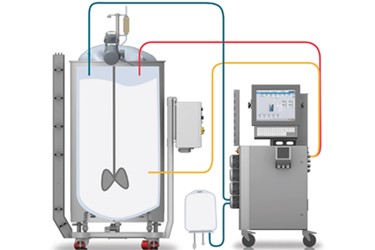A Comprehensive Overview to Implementing Foam Control Solutions in Your Procedures
Efficient foam control is a crucial element of functional performance that often goes overlooked. Comprehending the ins and outs of foam generation can considerably influence both productivity and item top quality. This overview details the various challenges postured by foam and the varied services available, providing a framework for choose and carrying out one of the most ideal techniques. By taking a look at crucial factors such as application compatibility and employees training, organizations can optimize their foam administration efforts. As we explore these parts, the possibility for transformative enhancements in your operations becomes obvious. What steps will you take following?
Comprehending Foam Challenges
Foam challenges are a considerable issue throughout various sectors, influencing functional performance and item top quality. The development of too much foam can impede processes such as mixing, transportation, and storage space, causing boosted downtime and waste. In markets like food and beverage, drugs, and petrochemicals, foam can interfere with production lines, triggering product incongruities and contamination dangers.
In addition, foam can block tools capability, leading to costly repair work and maintenance. In wastewater treatment, foam can interfere with clarifier operations, resulting in reduced therapy effectiveness and governing conformity problems.
Comprehending the underlying root causes of foam generation is important for efficient monitoring. Elements such as surfactants, temperature fluctuations, and anxiety degrees can all contribute to foam manufacturing. Determining these elements enables sectors to carry out targeted approaches that decrease foam development while preserving item integrity.
Sorts Of Foam Control Solutions

Mechanical remedies involve the usage of tools such as foam skimmers or defoamers. Chemical services, on the other hand, include the application of defoaming agents-- substances that disrupt the foam structure, leading to its collapse. Foam Control.
Finally, functional approaches focus on process changes. This might entail changing tools parameters, such as temperature and stress, or altering the flow rates of fluids to reduce foam generation. Furthermore, applying great housekeeping practices can likewise minimize foam development by reducing pollutants that contribute to foam security.
Selecting the suitable foam control service involves assessing the details requirements of the procedure, consisting of the kind of process, the characteristics of the products included, and safety factors to consider.
Choosing the Right Products
Selecting the ideal foam control products requires an extensive understanding of the specific application and its distinct challenges. Elements such as the sort of foam, the setting in which it happens, and the desired result all play pivotal duties in product option. Foam Control. In sectors such as food processing, it is imperative to choose food-grade defoamers that comply with security laws while properly taking care of foam.
Furthermore, consider the viscosity of the fluid where the foam problem exists. Some products are formulated for low-viscosity applications, while others are customized read this article for thicker liquids. Compatibility with existing processes is an additional essential element; the chosen foam control representatives must integrate perfectly without disrupting general procedures.
Another critical element is the technique of application. Some items might need dilution, while others can be applied directly. Evaluating the convenience of usage and the called for dosage can supply insights into the product's effectiveness and cost-effectiveness.
Execution Strategies
Effective execution approaches for foam control options call for a methodical method that lines up product option with functional demands. The primary step entails an extensive analysis of the processes where foam happens, determining specific areas that require intervention. By engaging cross-functional teams, including quality, manufacturing, and design assurance, organizations can gather insights that inform the option of one of the most efficient foam control items.
Following, it is vital to develop clear goals for foam reduction, making sure that these goals are attainable and quantifiable. This may involve specifying acceptable foam levels and the timelines for application. Training employees on the properties and application approaches of chosen foam control representatives is similarly important, as correct usage is essential for ideal outcomes.
Furthermore, integrating foam control options into existing process requires cautious preparation. Organizations ought to create a phased application strategy, permitting changes based on preliminary outcomes. Normal communication and comments loopholes with staff associated with the procedure will certainly help with prompt problem-solving and promote a society of continuous renovation. Eventually, a well-structured approach will certainly improve functional efficiency while properly taking care of foam-related obstacles.
Surveillance and Evaluating Effectiveness
Tracking and examining the look at here now performance of foam control services is essential for making certain that implemented techniques produce the desired results. index This process entails organized information collection and evaluation to assess the performance of foam control agents and strategies. Key performance indicators (KPIs) should be established prior to execution, permitting a clear standard versus which to gauge progression.

Assessing efficiency likewise needs regular evaluations of foam control procedures and representative effectiveness. This can be completed through tasting and testing, enabling operators to determine if current options are meeting operational demands. Additionally, it is important to get responses from employee that engage with these systems daily, as their insights can reveal functional subtleties that measurable data may overlook.

Inevitably, an organized tracking and examination structure aids recognize essential changes, making certain that foam control options remain reliable, affordable, and aligned with organizational goals.
Verdict
In conclusion, reliable foam control solutions are crucial for enhancing functional efficiency and maintaining product top quality. A complete understanding of foam obstacles, combined with the selection of ideal products and application strategies, assists in the effective management of foam generation.
Applying good housekeeping methods can additionally minimize foam formation by lowering contaminants that add to foam stability.
Picking the ideal foam control items needs a thorough understanding of the certain application and its special difficulties (Foam Control).Successful application techniques for foam control solutions need an organized strategy that straightens product choice with functional needs.In conclusion, reliable foam control options are essential for maximizing functional effectiveness and keeping item top quality. A comprehensive understanding of foam difficulties, integrated with the selection of appropriate products and implementation approaches, promotes the successful monitoring of foam generation
Comments on “The Function of Foam Control in Wastewater Procedure: Finest Methods and Techniques”